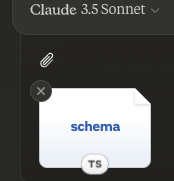Protocol Revision: 2025-03-26
User Interaction Model
Resources in MCP are designed to be application-driven, with host applications determining how to incorporate context based on their needs. For example, applications could:- Expose resources through UI elements for explicit selection, in a tree or list view
- Allow the user to search through and filter available resources
- Implement automatic context inclusion, based on heuristics or the AI model’s selection

Capabilities
Servers that support resources MUST declare theresources capability:
subscribe: whether the client can subscribe to be notified of changes to individual resources.listChanged: whether the server will emit notifications when the list of available resources changes.
subscribe and listChanged are optional—servers can support neither,
either, or both:
Protocol Messages
Listing Resources
To discover available resources, clients send aresources/list request. This operation
supports pagination.
Request:
Reading Resources
To retrieve resource contents, clients send aresources/read request:
Request:
Resource Templates
Resource templates allow servers to expose parameterized resources using URI templates. Arguments may be auto-completed through the completion API. Request:List Changed Notification
When the list of available resources changes, servers that declared thelistChanged
capability SHOULD send a notification:
Subscriptions
The protocol supports optional subscriptions to resource changes. Clients can subscribe to specific resources and receive notifications when they change: Subscribe Request:Message Flow
Data Types
Resource
A resource definition includes:uri: Unique identifier for the resourcename: Human-readable namedescription: Optional descriptionmimeType: Optional MIME typesize: Optional size in bytes
Resource Contents
Resources can contain either text or binary data:Text Content
Binary Content
Common URI Schemes
The protocol defines several standard URI schemes. This list not exhaustive—implementations are always free to use additional, custom URI schemes.https://
Used to represent a resource available on the web. Servers SHOULD use this scheme only when the client is able to fetch and load the resource directly from the web on its own—that is, it doesn’t need to read the resource via the MCP server. For other use cases, servers SHOULD prefer to use another URI scheme, or define a custom one, even if the server will itself be downloading resource contents over the internet.file://
Used to identify resources that behave like a filesystem. However, the resources do not need to map to an actual physical filesystem. MCP servers MAY identify file:// resources with an XDG MIME type, likeinode/directory, to represent non-regular files (such as directories) that don’t
otherwise have a standard MIME type.
git://
Git version control integration.Error Handling
Servers SHOULD return standard JSON-RPC errors for common failure cases:- Resource not found:
-32002 - Internal errors:
-32603
Security Considerations
- Servers MUST validate all resource URIs
- Access controls SHOULD be implemented for sensitive resources
- Binary data MUST be properly encoded
- Resource permissions SHOULD be checked before operations